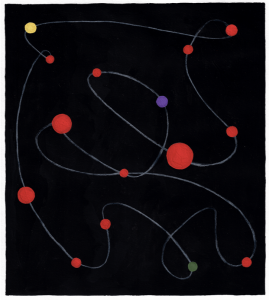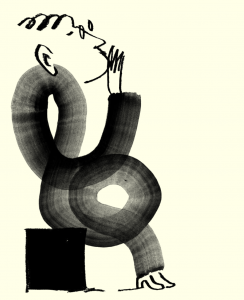- Whilst the rest of the world frets over building BRICs, a forgotten continent is quietly asserting itself by swapping aid for trade. Confounding the traditional images of disease and militiamen, Africa’s time is now. Words Don Morrison and Sofia Englund
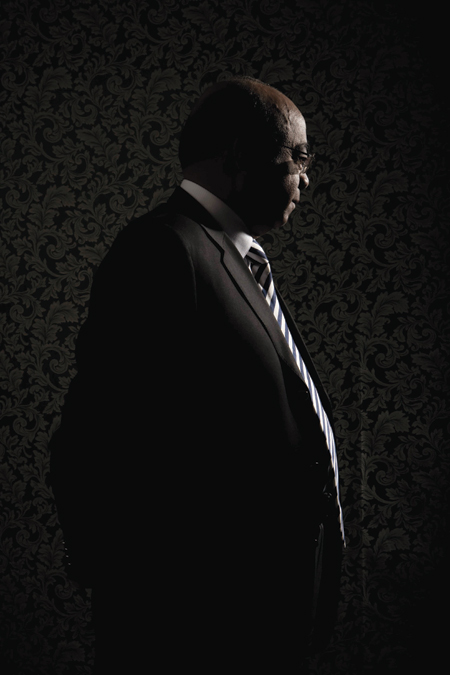 DR MO INRAHIM
DR MO INRAHIM
–
Founder Celtel & Mo Ibrahim Foundation
–Nowhere in the world has the mobile phone caught the public imagination nor, arguably, improved the quality of life, than it has in Africa. Just over 10 years ago a SIM card cost $1,500, now it’s predicted that half of Africa’s one billion people has a mobile phone. Mohammed “Mo” Ibrahim made his name and fortune by contributing to growth of the continent’s communications industry. By the time Celtel was sold to MTC Kuwait (Zain) in 2005, for $3.4bn, the company had invested more than $750 million in Africa and had about 24 million subscribers in 15 African countries. Dr Ibrahim went on to establish the Mo Ibrahim Foundation to promote African development, with a special focus on good governance. The foundation awards a $5m prize for Achievements in African Leadership, and an additional $200,000 a year for life.
Mo photographed by David Johnson“THE NEW DEAL”
 For most of their life together, Everest and Joyce, a 30-ish couple who live in the Rwandan village of Kagabiro, have farmed a small plot near the shores of Lake Kivu. In a typical year, they would harvest maybe 50kg of beans. Barely enough to feed them and their three children.
For most of their life together, Everest and Joyce, a 30-ish couple who live in the Rwandan village of Kagabiro, have farmed a small plot near the shores of Lake Kivu. In a typical year, they would harvest maybe 50kg of beans. Barely enough to feed them and their three children.Now things are looking up. Last year Everest and Joyce’s bean doubled to 100kg. They also grew enough maize to sell some at the local market, netting them more money than they had ever seen in one season: $83. Suddenly, says Joyce, a lively woman in spotless maroon headscarf and vivid, traditional-print dress, “life is different.”
What is truly different is that Everest and Joyce’s story is being repeated across Africa. While the world was busy looking elsewhere, the continent best known for poverty, disease, famine, corruption and civil war has – quietly and somewhat astonishingly – gotten its beans in a row. Sure, many of the old problems persist, and several of Africa’s 50-odd countries are still screaming nightmares. But the overall picture is perhaps more hopeful than at any time in the half-century since the sunset of colonialism.
From Morocco to Mauritius, South Africa to Sudan, Africa now has the highest economic growth rate of almost any region on earth. The continent as a whole grew by nearly five per cent last year, more than twice as fast as the US or Europe. At least a dozen African economies have expanded by six per cent a year for most of the past decade and several have averaged 10 per cent, outstripping such rising powers as China, India and Brazil. Even the long-troubled region south of the Sahara is growing at a faster ten-year rate than the previous poster child for economic vitality, East Asia. Foreign debt in Africa has declined by a quarter in the past decade, budget deficits by two-thirds, and the number of people living below the World Bank’s poverty line ($1.25 a day) by ten percentage points. Meanwhile, Africa’s trade with the rest of the world has doubled. As the World Bank recently predicted: “Africa could be on the brink of an economic take-off, much as China was 30 years ago and India 20 years ago.”
So bright does Africa’s future appear that Westerners might be forgiven some puzzlement. Barely a decade ago, the “Dark Continent” was being dismissed as a land without a future at all. Africa was “the basket case of the planet, the ‘Third World of the Third World,’” to Time magazine, and “the hopeless continent” to The Economist. Not without reason. Two out of three African countries were wracked by civil war or other serious conflict. Nearly three in four were ruled by military juntas or one-party dictatorships. AIDS was on the march. Malaria and other tropical diseases raged virtually unchecked. Drought and famine stalked the land. Economies throughout the continent were sliding backwards. Between 1960 and 1990, Africa’s share of global economic output dropped from 1.9 to 1.2 per cent.

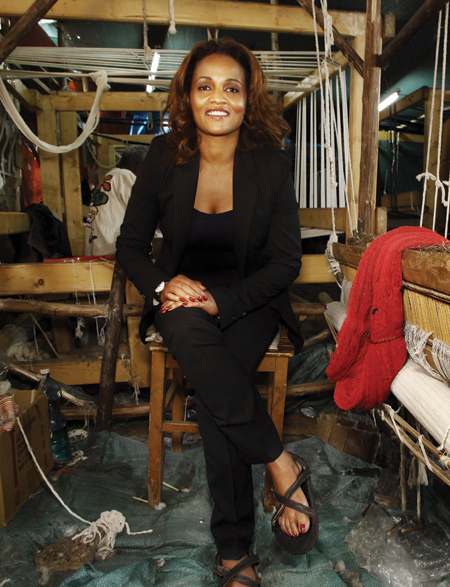 BETHLEHEM TILAHUN ALEMU
BETHLEHEM TILAHUN ALEMU
–
Founder & Managing Director soleRebels
–Having grown up watching family and neighbours struggling, Bethlehem Tilahun Alemu decided to focus her business skills on her community, Zenabwork, one of the most impoverished areas in Addis Ababa. Her company, soleRebels, grew out of the idea to bring jobs to her community, a place where there literally were none. By harnessing the community’s artisan skills and channelling these into a sustainable, global fair trade footwear business, soleRebels shoes are now being sold in over 30 countries around the world, and employees are being paid “proud wages” that are on average four times the legal minimum wage and three times the industry average for similar work. Profits from sales are reinvested in the community through the “Artisan Education Fund”, which covers education costs for employees’ children and/or relative children.
Bethlehem photographed by Michel Temteme at the soleRebels office in Addis AbabaThe image of a helpless Africa endures. According to Google, the most common single term paired with “Africa” in searches from the US since 2004 has been “AIDS”. Richard Dowden, executive director of the Royal Africa Society, observes in his graceful 2008 book Africa: Altered States, Ordinary Miracles: “Say ‘Africa’ to people who have never been there and they will describe a sick and starving child and men with guns. The news of Africa has been almost exclusively about poverty, wars and death.”
What happened to turn the news of Africa from bad to good? Many things: some momentous, some so small that they passed almost unnoticed. Many experts say the revival was inevitable. In this view, the charitable efforts of Western donor countries and non-governmental organisations – pouring money into education, poverty eradication, disease control – finally paid off. Other observers say pretty much the opposite: that Africa has rebounded largely because the old ways of aid have been replaced by a new emphasis on entrepreneurialism, technology and private investment.
The battle lines in this dispute are confusing and often intersecting. The World Bank and the International Monetary Fund, for instance, have long been pillars of the conventional approach to African aid, having underwritten thousands of development projects and financial reforms over the years. But critics have accused those institutions of favouring grandiose schemes that are often unsustainable, environmentally destructive and financially ruinous for the beneficiaries. Still, some of the loudest complaints have come from inside the offending institutions. Joseph Stiglitz, for instance, was forced out as World Bank chief economist in 2000 after questioning conventional development policies. Likewise, the rise of microlending – hailed as a market-based solution to many of the developing world’s problems – has been criticised by some aid experts for everything from ensnaring households in a morass of debt to doing little to lift the status of women.
Jeffrey Sachs, another leading US economist, has become one of the biggest critics of aid expenditures and at the same time a major voice for increasing them. Sachs, who campaigned unsuccessfully to become World Bank president in 2012, argues for smaller, smarter and better coordinated initiatives. To demonstrate what he means, he has helped create some 80 Millennium Villages, where outside experts work closely with African villagers to improve agriculture, education, health and gender equality. “Poverty reduction has entered a new era,” Sachs enthuses. “Mobile phones and wireless broadband enable new models of business development and service delivery. New methods of prevention, diagnosis and treatment are controlling ancient scourges such as malaria. Improved agriculture technologies can double or even triple the yields of subsistence farmers from one season to the next.”

- Heady stuff, and not without its sceptics. William Easterly, yet another US economist, has blasted Sachs – along with celebrity do-gooders Bob Geldof and Bono – for pursuing a messianic vision of “saving” Africa that almost suggests a new colonialism. Easterly is contemptuous of what he calls “planners,” who seek to impose top-down solutions for systemic problems. He does, however, speak favourably of “searchers,” who look for bottom-up answers to specific problems. That would seem to put him in the same camp as Sachs, though the two squabble incessantly.
Dambisa Moyo, a US-trained economist born in Zambia (the battle for Africa is evidently being fought in the faculty commons rooms of America), questions the very concept of Western aid. “There is no country, anywhere in the world, that has meaningfully reduced poverty and spurred significant and sustainable levels of economic growth by relying on aid,” she says. “If anything, history has shown us that by encouraging corruption, creating dependency, fuelling inflation, creating debt burdens and disenfranchising Africans – to name a few – an aid-based strategy hurts more than it helps.” Perhaps the most succinct critique of development aid comes from Richard Dowden of the Royal Africa Society: “There has always been a missing element: the Africans.”
“ENTER THE AFRICANS”
 Oh, yes. Them. After decades of being largely absent from the fight over their fate, Africans are now in the front lines. Home-grown businesses are popping up everywhere, and entrepreneurs are the new African heroes. Andrew Rugasira, for example, has been profiled in magazines and newspapers around the world since Good African Coffee, the company he launched in his native Uganda, began exporting its flavourful beans to the US and Europe three years ago. The $2 million worth he sold in 2012 is only a drop in the ocean of global coffee sales, but it brings money to 14,000 growers who supply Rugasira’s beans. As he told The New York Times: “We as a new generation of African entrepreneurs believe that we can bring quality products to the global market.”
Oh, yes. Them. After decades of being largely absent from the fight over their fate, Africans are now in the front lines. Home-grown businesses are popping up everywhere, and entrepreneurs are the new African heroes. Andrew Rugasira, for example, has been profiled in magazines and newspapers around the world since Good African Coffee, the company he launched in his native Uganda, began exporting its flavourful beans to the US and Europe three years ago. The $2 million worth he sold in 2012 is only a drop in the ocean of global coffee sales, but it brings money to 14,000 growers who supply Rugasira’s beans. As he told The New York Times: “We as a new generation of African entrepreneurs believe that we can bring quality products to the global market.”Bringing quality products to the local market is paying off as well. Just ask Mohammed “Mo” Ibrahim, the Sudanese-born engineer who has become perhaps Africa’s most successful entrepreneur of all time. In the 90s Ibrahim founded the company that became Celtel, soon the continent’s largest mobile network, and is now reported to be worth nearly $2 billion. Today Ibrahim is trying to bring a quality product to Africa that has been in frustratingly short supply: good governance. His Mo Ibrahim foundation promotes transparency, accountability and efficiency in Africa and awards a yearly $5 million Prize for Achievement in African Leadership. The award is aimed at providing an incentive to African dictators to relinquish power peacefully, as did the first recipient, Mozambique’s Joaquim Chissano in 2007.

- “In both business and philanthropy I have tried to focus on the gap between perception and reality regarding Africa,” says Ibrahim. “As an entrepreneur, I demonstrated that by running my company cleanly and responsibly, I could mitigate the perceived risks of doing business in Africa. I believe that where there is a gap between perception and reality, there is good money to be made. As a philanthropist, I have focused on trying to promote models of excellent leadership to contradict the perception that all African leaders are corrupt dictators. Too often in Africa businesses and civil society perceive each other to be in opposition. Yet they need each other. Businesses cannot hold society to account, and civil society will not create jobs and economic growth. We need both, but we need both to act transparently and accountably.”
Ibrahim has his work cut out for him: African countries have long been overrepresented at the wrong end of Transparency International’s annual corruption rankings. (Latest results: only Cape Verde, Mauritius and Rwanda made it into the top 50). But some aid experts believe that the rise of women in African affairs may help promote transparency and accountability, since the corruption problem is thought to be a province of the continent’s men. Indeed, the notion has driven micro-financiers to favour women over men in their lending practices. If that perception is true, then we should all cheer an apparent explosion of women entrepreneurs in Africa.
Consider Ethiopia’s Bethlehem Tilahun. She was a recent college graduate in 2004 when she started making shoes with local artisans in a workshop on a small piece of land owned by her grandmother. Today Tilahun’s company, soleRebels (pun intended), employs more than 100 workers and turns out more than $2 million worth of shoes, slippers and sandals a year. Made from hand-woven local fibres and recycled automobile tyres, they sell in Western fashion capitals for as much as $60 a pair. “I was born and raised here in Addis Ababa,” says Tilahun. “My mom was a cook and my dad was an electrician. They taught me the value of respect for one’s family and the larger community. After working in the private sector for a while I had a strong desire to focus my business skills on my community, one of the most impoverished in Addis. There were so many talented people who could do great things. But owing to extreme poverty, stigma, marginalisation and a whole load of other factors, many of them could not even get simple jobs. This was devastating for me. They were my neighbours, my family members.”
Tilahun saw something else: “the devastating effect that aid and charity had had on the community, making people complacent and dependant. So I knew that anything that I did had to be truly business-oriented.” One of her biggest challenges was to overcome a prejudice against products from Africa. “It’s pretty hard to convince someone to buy what you are selling when someone else has convinced them you are solely occupied with swatting flies from your face or running from evil warlords.” Tilahun seems to have overcome that problem. Most of her shoes are sold abroad. She has opened three soleRebel branded stores in Taiwan and plans more in London, New York, Taiwan, Zurich, Chicago, Seattle, Miami and, of course, Seoul.
 ANDREW RUGASIRA
ANDREW RUGASIRA
–
Founder & CEO Good African Coffee
_The first African coffee producer to secure a contract to supply directly to a British supermarket, Andrew Rugasira, pulled off a kind of revolution; challenging the terms of African – Western trade by cutting out the middleman and promoting more equal and profitable business relationships. But the road getting to this point was long and challenging. At one end of his business were farmers who were using archaic methods, suspicious of change as they had always been on the losing end of the deal. At the other were buyers at the corporate headquarters of chains like Waitrose and Sainsbury’s, averse to altering the terms of commerce. The pitch that finally won both sides over was that trade, and not aid, is the only viable, sustainable strategy to improve living standards in Africa. Splitting the profits 50/50 with the farmers, Andrew also pledged to channel half of his share into more equipment and training, and to basic educational programs like “financial literacy” to bolster the village banks.
Since then more than 14,000 farmers have joined Good African’s network of suppliers.
Andrew photographed by Jonathan Torgovnik
 LEILA CHIRAYATH JANAH
LEILA CHIRAYATH JANAH
–
Founder & CEO Samacourse
–When awarded a college scholarship at 16, Leila Janah convinced the awarding body to let her spend it teaching at a school for the blind in Ghana. Learning her own lessons from her smart and motivated students, she understood that the world’s poorest weren’t poor because they lacked initiative, but because they lacked opportunities to make a living wage by being excluded from the global market. Leila’s key insight was that technology could provide access to that market. She founded Samasource in 2008, coupling the growing trend of outsourcing digital work with a powerful way to create job opportunities in poor rural areas. From her home base in San Francisco, Leila now oversees an operation of more than 3,000 workers that has paid out over $2 million in living wages to date, thanks to “microwork”, a series of small tasks that have been broken out of a larger project and can be completed via the Internet.
Leila photographed by Farhad Samari at the Samasource office in San FranciscoAfrica’s rise has not gone unnoticed in western financial capitals. Hardly a week passes without an investment forum in London, Frankfurt or New York focused on tapping the Africa market. Private-equity firms raised an estimated $4 billion in Africa-focused funds in 2010, up from $2.8 billion the year before. Yet the US and Europe are relatively minor players in the new African story – compared to China. The People’s Republic has poured billions into the continent in recent years, mostly into developing Africa’s abundant natural resources – oil, coal, iron ore – to fuel the Chinese manufacturing juggernaut. Indeed, China-Africa trade has tripled in the past three years to $166 billion, and China is now the continent’s largest trading partner. China has also invested heavily in infrastructure, especially in projects that help speed the flow of resources out of Africa.
Many Africans are uneasy about this relationship. Chinese companies often bring their own workers, depriving Africans of jobs. And Chinese investment usually comes without the sort of human-rights caveats that Westerners like to impose. South African President Jacob Zuma warned in 2012 that Africa’s trade relationship with China was “unsustainable”. To that end, many African countries are turning to “South-South” partnerships with developing countries in Asia and Latin America, which now account for a third of Africa’s trade.
Despite the vast amounts of investment flowing into Africa, many home-grown companies still find it difficult to get financing. African securities markets are notoriously illiquid, so share offerings are risky and rare, and the global financial crisis has cut bank lending to a trickle.To address those problems the venerable British charity Oxfam has launched a fund to provide seed capital for companies too big for micro-lending and too small for commercial loans. Known as the Enterprise Development Programme (EDP), the effort has raised around 4 million and provided capital to more than a dozen SMEs (small and medium-sized enterprises) in the agricultural sector. EDP harnesses the exceptional capacity of agriculture to drive economic growth and reduce poverty (GDP growth generated by agriculture is three times as effective in reducing poverty as growth in other sectors), and targets SMEs as these represent 90% of all businesses in Africa, contributing to over 50% of GDP and accounting for about 63% of employment. The fund operates like a private-sector investment firm, vetting projects rigorously and offering consulting services to lucky recipients. “What we are doing is making an investment, not just providing people with an income,” says Kyle Johnson, EDP Fundraising Manager. “We are helping people work their way out of poverty in contexts where previous models have failed.”

“SMALL IS STILL BEAUTIFUL”
 Learning from failure is a theme that comes up often nowadays in discussions of African aid. The idea is reflected in the “appropriate technology” movement inspired by EF Schumacher’s 1973 book Small is Beautiful, which has many fervent adherents in Africa. Martin Fisher, among them, had just finished a PhD in mechanical engineering when, in the 80s, he went off to spend five years working with ActionAid in rural Kenya. Eventually he realised that “we were not giving people what they needed.” Fisher and his colleagues would, for instance, dig a well so villagers could have water for drinking and crop irrigation. But after the aid team left the pump would eventually break and the well fall into disuse. So Fisher and his ActionAid colleague Nick Moon founded KickStart to come up with more appropriate solutions. They developed the MoneyMaker, a foot-operated irrigation pump so simple and cheap (as little as $70) that individual farmers could buy and maintain it. They sold MoneyMakers at below cost through local stores to strengthen the retail economy.
Learning from failure is a theme that comes up often nowadays in discussions of African aid. The idea is reflected in the “appropriate technology” movement inspired by EF Schumacher’s 1973 book Small is Beautiful, which has many fervent adherents in Africa. Martin Fisher, among them, had just finished a PhD in mechanical engineering when, in the 80s, he went off to spend five years working with ActionAid in rural Kenya. Eventually he realised that “we were not giving people what they needed.” Fisher and his colleagues would, for instance, dig a well so villagers could have water for drinking and crop irrigation. But after the aid team left the pump would eventually break and the well fall into disuse. So Fisher and his ActionAid colleague Nick Moon founded KickStart to come up with more appropriate solutions. They developed the MoneyMaker, a foot-operated irrigation pump so simple and cheap (as little as $70) that individual farmers could buy and maintain it. They sold MoneyMakers at below cost through local stores to strengthen the retail economy.Today more than 135,000 of the pumps are in operation. Fisher figures they boost users’ income by an average of $700 to $800 a year, transforming them from subsistence to commercial farmers. “People are not looking for handouts, but for opportunity,”says Fisher.
That was much the same conclusion that Leila Janah reached after visiting Africa, first as a volunteer English teacher and later as a World Bank consultant. Fresh from Harvard with a degree in African Development Studies, she was struck by the mismatch between people willing to work and people who needed work done. So with $35,000 of her own money she launched Samasource, a non-profit organisation that uses the Internet and mobile phones to find willing hands for part-time projects. The company, based in Nairobi, secures contracts for digital services from businesses in the U.S. and Europe, divides the work into small pieces, or microwork as Janah calls it, and sends it to delivery centres for completion through a web-based interface. Different from traditional business process outsourcing, “impact sourcing”, à la Samasource, is aimed at boosting economic development in poor marginalised areas and has channelled more than $2 million in earnings to a total of 3,000 workers. Janah recently closed a $7.5 million round of philanthropic funding, led by the MasterCard Foundation, to expand Samasource into other countries. “I am interested in direct cash transfer as a way of putting money in people’s pockets more efficiently,” she says. “What is appealing about that model is that it requires relatively small overheads and you can target people who are genuinely poor.”
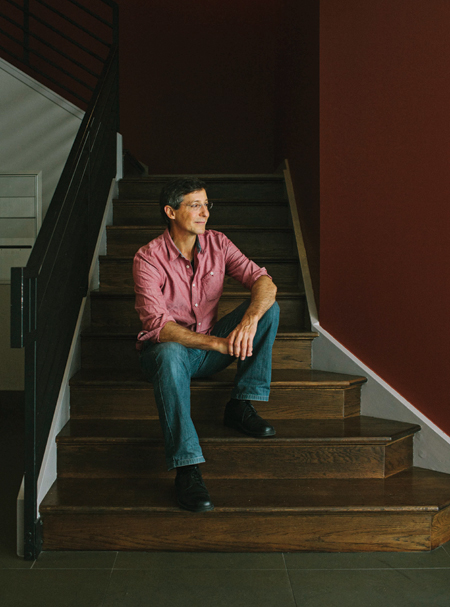 MARTIN FISHER
MARTIN FISHER
–
Co-Founder & CEO KickStart International
–With a PhD in engineering from Stanford University, Martin Fisher came to Africa in the mid-80s hoping to do something for the poor by introducing new technology. He spent the next five years working for ActionAid, where he met Nick Moon, his future business partner. Martin and Nick became increasingly frustrated by the lack of sustainable impacts on poverty that conventional development projects were having. They took a rigorous look at the shortcomings of these projects and from this they developed a new model for fighting poverty that would bring together the power of technology with the proven sustainability of the market place and the private sector. To date, KickStart has helped over 680,000 people get out of poverty, by providing sustainable income rather than handouts, and created 136,000 new businesses.
Martin photographed by Farhad Samari at the KickStart office in San Francisco

Africa is blessed with an abundance of people who are genuinely poor. So the line between development aid and private investment is often irrelevant: wherever the money comes from, a little goes a long way – especially when it goes the right way, into the right hands with the right training and technology. Janah cites the One Acre Fund, a US-based charity that provides farmers with modest loans and technical advice, as an example of how putting a small amount of money into someone’s pocket can pay enormous dividends. Which brings us back to Everest and Joyce, the Rwandan couple we met earlier – and who are now featured on One Acre’s website. Their bean harvest doubled after One Acre lent them money to buy better seeds and taught them to space crop rows more effectively. With money coming in, their lives have been transformed.Though together for years, Everest and Joyce had never married. Now they are planning a large wedding ceremony. To accommodate the guests, however, they realised they had to enlarge their house. Their new wealth has allowed them to add a room, as well as glazed windows, a cement coating and a paint job. There is more. “Now that we’re expanding our house,” says Joyce, who has clearly caught the entrepreneurial fever that is propelling Africa forward, “maybe in the future someone will rent the extra room.” And so it begins.
Africa originally appears in Port issue 8
 Words Don Morrison
Words Don Morrison
& Sofia Englund
Additional reporting
Jolyon Webber
Infographic
Kuchar Swara
Subscribe to Port Magazine annually and receive each issue to your door.
Get PORT in print